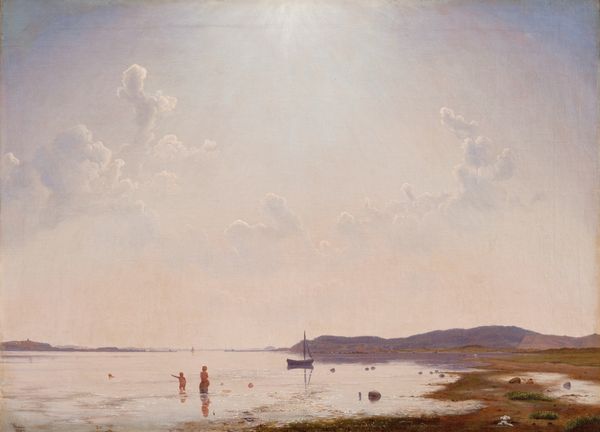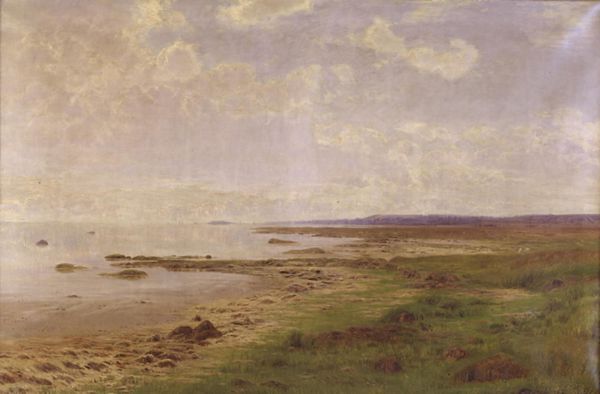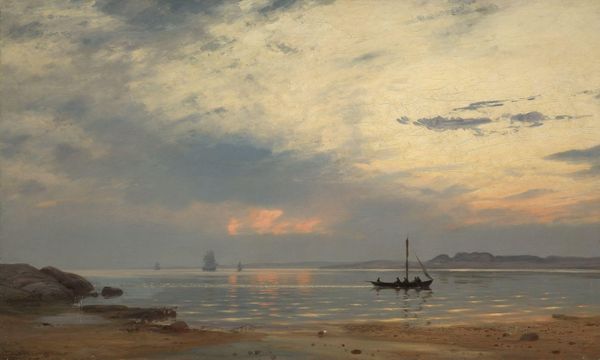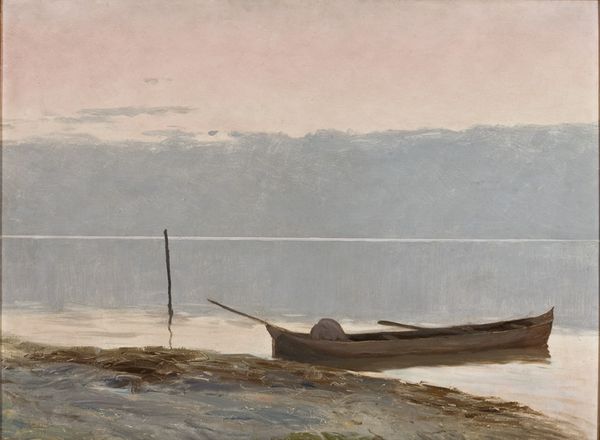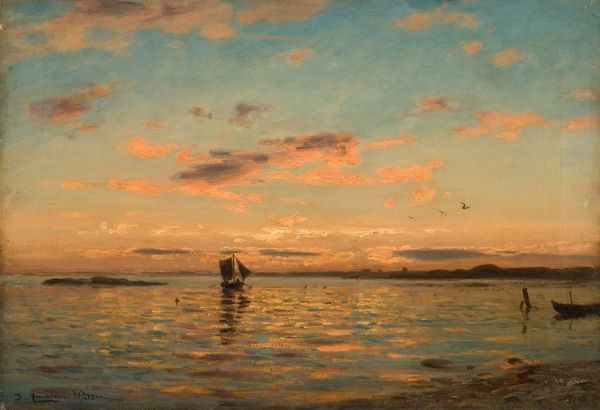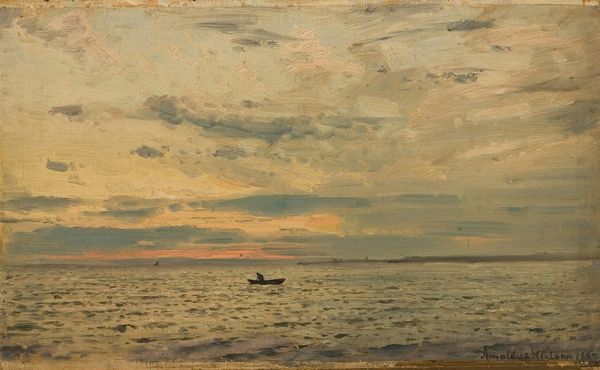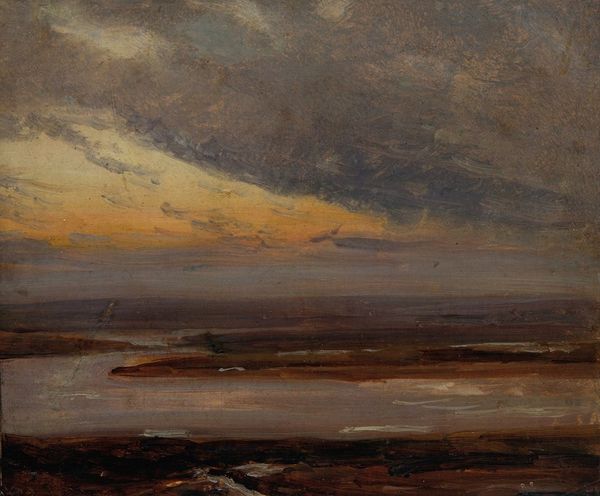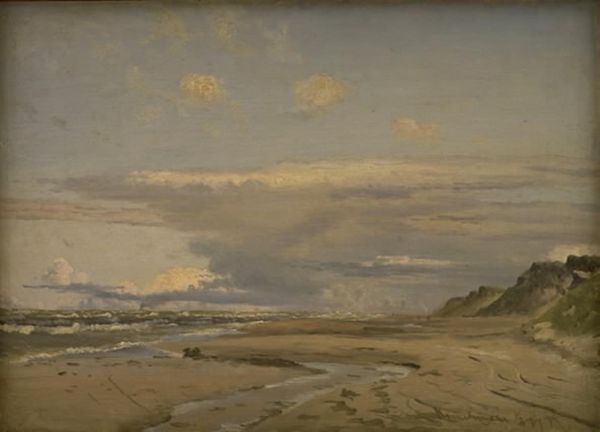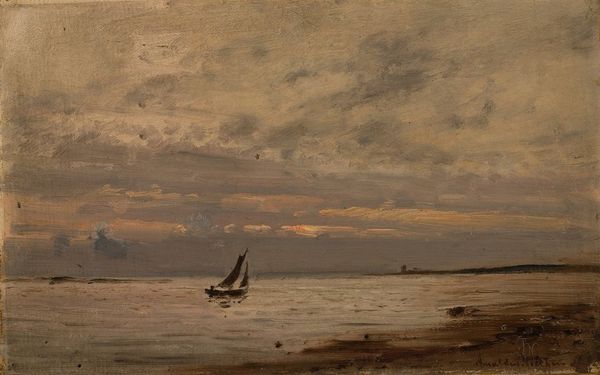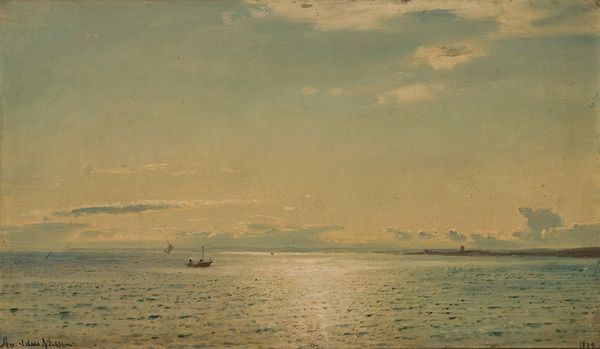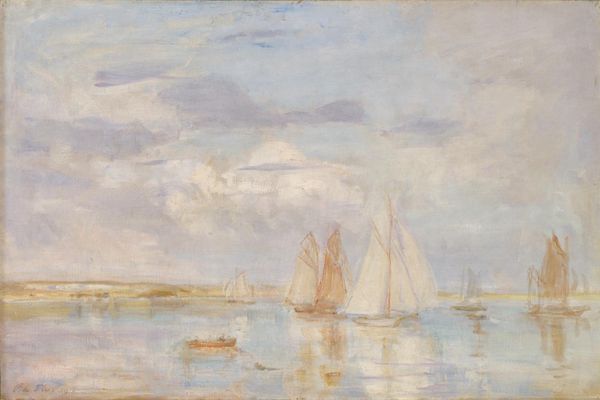
painting, plein-air, paper, watercolor
#
still-life-photography
#
water colours
#
painting
#
plein-air
#
landscape
#
paper
#
watercolor
#
romanticism
#
realism
Dimensions: 31.5 cm (height) x 42.5 cm (width) (Netto), 38.7 cm (height) x 50.3 cm (width) x 6.1 cm (depth) (Brutto)
Curator: Oh, isn’t that serene? A lone boat sits on the shore as the pale sun bleeds over the still water. Editor: Yes, a liminal atmosphere hangs about Vilhelm Kyhn's watercolor and paper sketch, "The Coast at Frederiksund." Painted in 1849, it captures the Danish coastline with delicate restraint. Curator: Restraint is the word. It feels… hesitant, almost melancholic. Is that the Romanticism coming through, do you think? The muted palette really adds to the somber mood. Editor: Without a doubt, the Romantic leanings are apparent, yes. Note the structural components though—how the artist uses a strong horizontal to divide the canvas into thirds. The boat creates a diagonal which your eye then uses as a conduit between the water and the heavy, vaporous sky. Semiotically, the color drain and dissolution of objects implies absence; what's present isn’t quite there, you could say. Curator: Absolutely, there’s an elusive quality to it, almost as if you could step right through it. Speaking of stepping, the location itself, Frederiksund—it has this light of a certain kind. Perhaps Kyhn tried to get at that. The very essence of the location. It feels like he wanted to capture a feeling, a memory. Editor: "Capture" is apt, I'd say. Kyhn uses broad washes of watercolor to capture the essence of light on the water. Observe how his technique contrasts, however; precise draftsmanship with soft brushwork. In doing so, this emphasizes the transition from the transient effects of light to the more solid form of the boat. It is a dichotomy of what disappears, of that which abides. Curator: Beautifully said. I think it’s precisely that contrast which gives the work its enduring quality. One can sense him seeking the solidity of an aesthetic he was clearly already moving beyond. Editor: Indeed. Through a language of spatial planes and veiled coloration, it opens out to us, if we open to it.
Comments
No comments
Be the first to comment and join the conversation on the ultimate creative platform.
